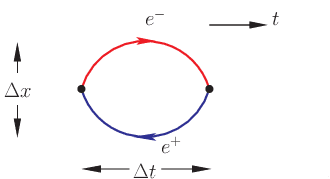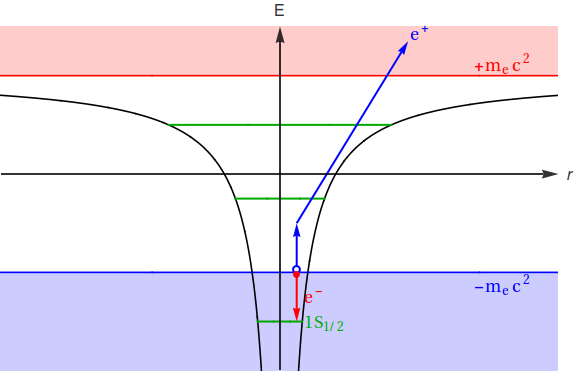In a previous post, we point out in the d+1 dimensions, the Coulomb's law reads, \[
\varphi(r) = \frac{\Gamma(\frac{d-2}{2})}{4\pi^{\frac{d}{2}}}\frac{1}{r^{d-2}}.
\] Apparently, in the 2+1 dimensions, this formula is divergent. To see this, first note that $x^\epsilon = 1 + \epsilon \log x$, and $\Gamma(\epsilon) = 1/\epsilon - \gamma$, the potential reads, \[
\varphi(r) \triangleq \lim_{\epsilon\to 0^+} \frac{\Gamma(\frac{\epsilon}{2})}{4\pi^{\frac{2+\epsilon}{2}}}\frac{1}{r^{\epsilon}} = \frac{1}{2\pi}\log\frac{1}{r} + \frac{1}{2\pi\epsilon} - \frac{1}{4\pi}\log e^\gamma\pi
\] We can regularize the potential by adding an infinitely large constant such that it obtains a finite value at a given distance $r_0$: \[
\varphi_r(r) = \frac{1}{2\pi}\log\frac{r_0}{r}.
\] But still, the potential divergences at infinity, which sort of violates the spirit of "locality".
The interpretation of this mathematical phenomenon is that in the 2+1 dimensions, long range correlation can be created with infinitely small energy. A consequence of this is the Coleman's theorem, stating that there is no spontaneous symmetry breaking of the continuous symmetry in the 2 dimensions.
In terms of the gravity, this infrared divergence is obviously non-physical. The potential becomes infinitely large near the source and far away from the source. A plausible interpretation is therefore $\varphi = \text{constant}$, at least for the type of gravity as we understand (We are not claiming the Poisson equation has no non-trivial solution in 2 dimensions.).
Of course, with a strong field strength, Newton's law should be replace by Einstein's equation: \[
R_{\mu\nu} = 8\pi G \Big( T_{\mu\nu} - T g_{\mu\nu} \Big).
\] Here $T = g^{\mu\nu} T_{\mu\nu}$. In the vacuum, this equation reduces to $R_{\mu\nu} = 0$. But this does not necessarily mean the space-time curvature is zero. The space time curvature is ultimately determined by the Riemann tensor $R^\mu_{\nu\sigma\rho}$. Non-vanishing curvature represents the propagation of the gravity from the source inside the vacuum.
Riemann tensor has $D^2(D^2-1)/12$ independent components, where $D=d+1$ is the space-time dimensionality. In the 2+1 case, it has 6 independent components, whereas the Ricci tensor $R_{\mu\nu}$ has $(3 \times 3 +3)/2 = 6$ independent components as well. Thus, Riemann tensor is expressible through the Ricci tensor: \[
R_{\mu\nu\rho\sigma} = \big( g_{\mu\rho}R_{\nu\sigma} - (\rho \leftrightarrow \sigma) \big) - (\nu \leftrightarrow \rho) - \frac{1}{2} (g_{\mu\rho}g_{\nu\sigma} - g_{\mu\sigma}g_{\nu\rho}) R
\] Here $R = g^{\mu\nu}R_{\mu\nu}$. As a result, Riemann tensor, hence the space-time curvature, is zero in the vacuum, in the 2+1 dimensions. This means gravity cannot propagator through the free space in the 2+1 dimensions! Einstein's equation is a full pledged dynamical theory of gravity with Newton's gravitational theory as its weak field approximation. Now, Einstein's theory actually agrees with Newton's theory that in the 2+1 dimensions there is no gravity!
Applying the gravitational theory in the 3+1 dimensions into the 2+1 dimension is somewhat unjustified. After all, non-body knows wether these are the correct modeling. However Newton's law is not an ad loc construction. It follows, as the Coulomb's law, the Poisson equation $\nabla^2 \varphi(x) = 0$. Einstein's equation has a stronger built-in beauty in it: it acquires a geometric interpretation. So these interesting observation is not a major consequence of our gravitational theory per se. It is more closely related to the special topology of the low dimensions, which is also well known. In fact, in the 2 dimensions, topology is more central than the local operators we cherish much in the 3 dimensions.
\varphi(r) = \frac{\Gamma(\frac{d-2}{2})}{4\pi^{\frac{d}{2}}}\frac{1}{r^{d-2}}.
\] Apparently, in the 2+1 dimensions, this formula is divergent. To see this, first note that $x^\epsilon = 1 + \epsilon \log x$, and $\Gamma(\epsilon) = 1/\epsilon - \gamma$, the potential reads, \[
\varphi(r) \triangleq \lim_{\epsilon\to 0^+} \frac{\Gamma(\frac{\epsilon}{2})}{4\pi^{\frac{2+\epsilon}{2}}}\frac{1}{r^{\epsilon}} = \frac{1}{2\pi}\log\frac{1}{r} + \frac{1}{2\pi\epsilon} - \frac{1}{4\pi}\log e^\gamma\pi
\] We can regularize the potential by adding an infinitely large constant such that it obtains a finite value at a given distance $r_0$: \[
\varphi_r(r) = \frac{1}{2\pi}\log\frac{r_0}{r}.
\] But still, the potential divergences at infinity, which sort of violates the spirit of "locality".
The interpretation of this mathematical phenomenon is that in the 2+1 dimensions, long range correlation can be created with infinitely small energy. A consequence of this is the Coleman's theorem, stating that there is no spontaneous symmetry breaking of the continuous symmetry in the 2 dimensions.
In terms of the gravity, this infrared divergence is obviously non-physical. The potential becomes infinitely large near the source and far away from the source. A plausible interpretation is therefore $\varphi = \text{constant}$, at least for the type of gravity as we understand (We are not claiming the Poisson equation has no non-trivial solution in 2 dimensions.).
Of course, with a strong field strength, Newton's law should be replace by Einstein's equation: \[
R_{\mu\nu} = 8\pi G \Big( T_{\mu\nu} - T g_{\mu\nu} \Big).
\] Here $T = g^{\mu\nu} T_{\mu\nu}$. In the vacuum, this equation reduces to $R_{\mu\nu} = 0$. But this does not necessarily mean the space-time curvature is zero. The space time curvature is ultimately determined by the Riemann tensor $R^\mu_{\nu\sigma\rho}$. Non-vanishing curvature represents the propagation of the gravity from the source inside the vacuum.
Riemann tensor has $D^2(D^2-1)/12$ independent components, where $D=d+1$ is the space-time dimensionality. In the 2+1 case, it has 6 independent components, whereas the Ricci tensor $R_{\mu\nu}$ has $(3 \times 3 +3)/2 = 6$ independent components as well. Thus, Riemann tensor is expressible through the Ricci tensor: \[
R_{\mu\nu\rho\sigma} = \big( g_{\mu\rho}R_{\nu\sigma} - (\rho \leftrightarrow \sigma) \big) - (\nu \leftrightarrow \rho) - \frac{1}{2} (g_{\mu\rho}g_{\nu\sigma} - g_{\mu\sigma}g_{\nu\rho}) R
\] Here $R = g^{\mu\nu}R_{\mu\nu}$. As a result, Riemann tensor, hence the space-time curvature, is zero in the vacuum, in the 2+1 dimensions. This means gravity cannot propagator through the free space in the 2+1 dimensions! Einstein's equation is a full pledged dynamical theory of gravity with Newton's gravitational theory as its weak field approximation. Now, Einstein's theory actually agrees with Newton's theory that in the 2+1 dimensions there is no gravity!
Applying the gravitational theory in the 3+1 dimensions into the 2+1 dimension is somewhat unjustified. After all, non-body knows wether these are the correct modeling. However Newton's law is not an ad loc construction. It follows, as the Coulomb's law, the Poisson equation $\nabla^2 \varphi(x) = 0$. Einstein's equation has a stronger built-in beauty in it: it acquires a geometric interpretation. So these interesting observation is not a major consequence of our gravitational theory per se. It is more closely related to the special topology of the low dimensions, which is also well known. In fact, in the 2 dimensions, topology is more central than the local operators we cherish much in the 3 dimensions.











